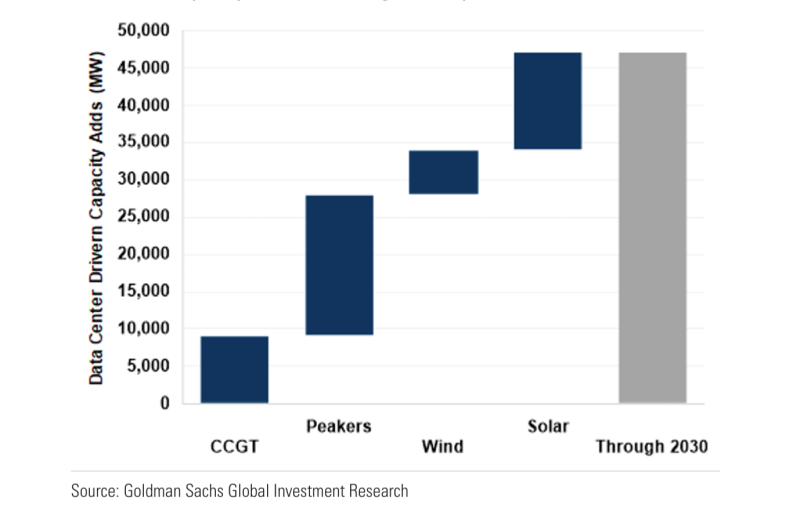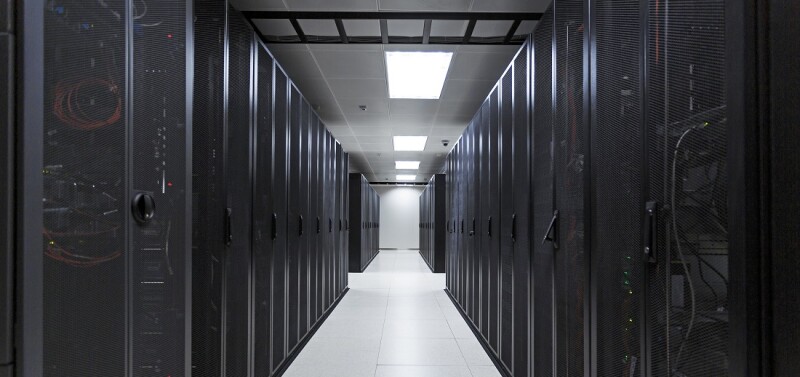Supermajor Chevron and investment firm Engine No. 1 formed a partnership to build a new company to develop scalable, reliable power solutions for US-based data centers running on natural gas. The joint development, in conjunction with GE Vernova, aims to establish multi-gigawatt-scale co-located power plants and data centers.
The first projects, which the companies refer to as “power foundries,” will use seven GE Vernova 7HA natural gas-fired turbines, with deliveries beginning in late 2026. The projects are expected to serve data centers in the US Southeast, Midwest, and West regions.
The joint development plans to deliver up to 4 GW, the equivalent of powering up to 3.5 million homes, by 2027 with potential to expand. The company is also advancing site selection and engineering work while engaging with potential customers, Chevron CEO Michael K. Wirth told financial analysts during the company’s Q4 2024 earnings call on 31 January.
The projects are expected to be designed with the flexibility to integrate lower-carbon solutions, such as carbon capture and storage (CCS), expected to capture more than 90% of the CO2 from the turbines, and renewable energy resources.
“Energy is the key to America’s AI dominance,” said Chris James, founder and chief investment officer of Engine No. 1. “By using abundant domestic natural gas to generate electricity directly connected to data centers, we can secure AI leadership, drive productivity gains across our economy, and restore America’s standing as an industrial superpower. This partnership with Chevron and GE Vernova addresses the biggest energy challenge we face.”
Chevron’s announcement comes on the heels of ExxonMobil’s announcement in December of a similar project to deliver gas-fueled electricity to US data centers.
ExxonMobil Plans Centralized Power Facility
ExxonMobil confirmed its intent to supply dedicated power to data centers, outlining plans in its December 2024 annual strategy document to offer “fully islanded power with no reliance on gas grid infrastructure,” with 90% of CO2 emissions abated through CCS.
ExxonMobil executives, including CEO Darren Woods, later confirmed the project in a press call, mentioning that the company was in talks with potential customers and had already secured land for a 1.5-GW plant.
The plant could be operational within 5 years and would be about twice the size of the nuclear reactor for which Microsoft signed a 20-year power purchase agreement with Constellation Energy to restart at Three Mile Island, near Harrisburg, Pennsylvania, according to The New York Times.
If built, it would be ExxonMobil's first power plant not dedicated to supplying its own operations.
The company’s existing CO2 pipeline network along the Gulf Coast, Wyoming, and Montana would play a critical role in supporting the CCS component of the project.
Chevron To Build Smaller, Customized Power Plants
Chevron is taking a different approach, though the end goal and CCS component remain the same. Instead of constructing a single large plant to serve many customers, Chevron plans to build customized, smaller power plants. These plants will be less than a third of the size of ExxonMobil’s centralized facility.
Chevron’s experience in building and operating nearly 5 GW of reliable, behind-the-meter power at large projects, such as the Gorgon natural gas project offshore Australia and at its Tengizchevroil operations in Kazakhstan, positions the company to meet the growing demand for data center power. Wirth emphasized that Chevron’s business model focuses on providing “high reliability at scale” for “premium customers,” without supplying power to the grid which would not deliver returns competitive with the company’s portfolio.
Meeting the Power Demand of Data Centers
In a recent note to investors, Goldman Sachs said the combination of renewables and energy storage could meet the lion’s share of AI-fueled increased power demand at data centers, but a baseload top-up, likely either gas or nuclear, will be needed to fill the gap.
“Our conversations with renewable developers indicate that wind and solar could serve roughly 80% of data center power demand if paired with storage, but some sort of baseload generation is needed to meet the 24/7 demand,” said Jim Schneider, digital infrastructure analyst for Goldman Sachs.
The investment giant believes renewable energy will account for about 40% of new plant capacity built to meet an expected 160% increase in data center power needs by 2030 against 2023 levels.

According to Goldman, nuclear is the preferred option to step in as the baseload generation but given both the scarcity of existing unregulated nuclear plants and the difficulty of building a new one, it views natural gas as the more realistic option for most data centers.
That could create a potential bottleneck for data centers, with many utilities estimating that the wait to receive a large gas turbine could extend to 2029 if one were to enter the queue now, shifting the focus to smaller-scale natural gas peakers.
Goldman concluded that roughly 50% of data center demand will need to be met with new capacity, and that the generation capacity that is added will likely be 40% natural gas combined-cycle gas turbines, 20% natural gas peakers, 25% solar, and 15% wind.
Applying those figures to its demand estimates, Goldman says it implies roughly 47 GWs of incremental generation capacity through 2030.

